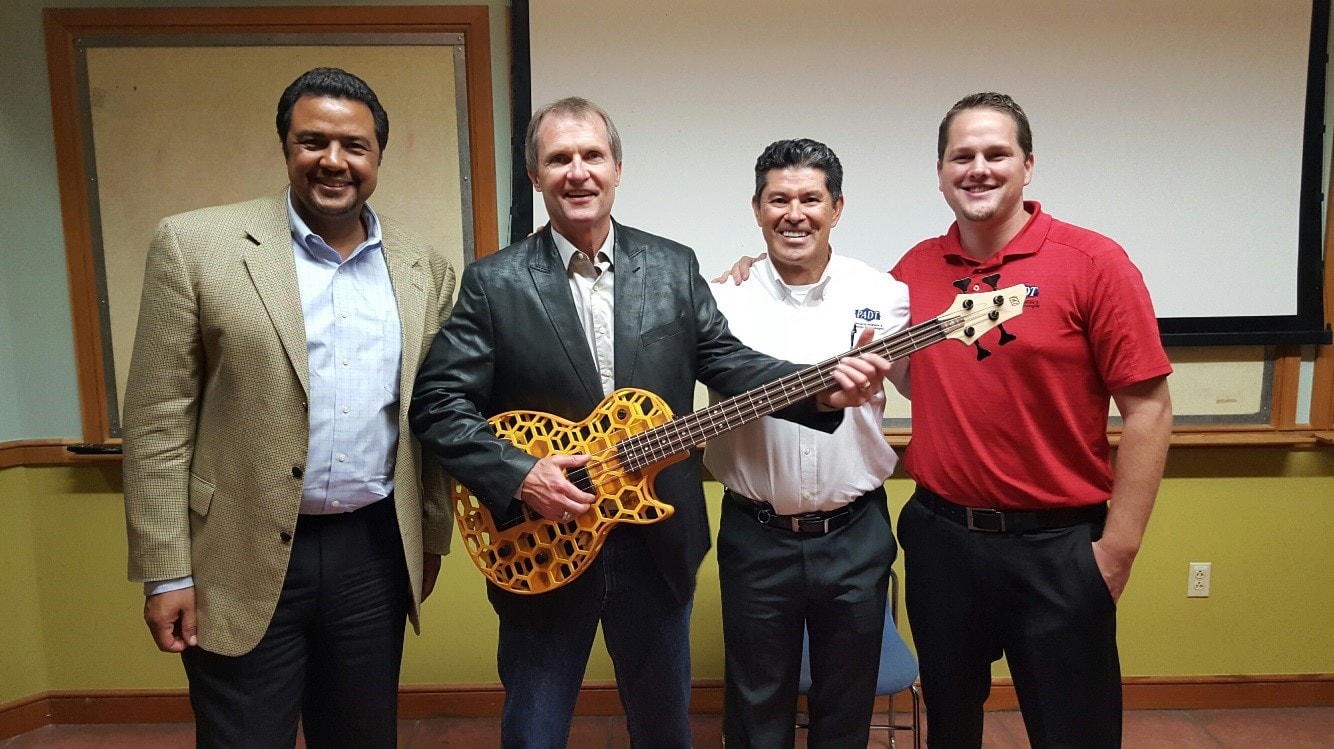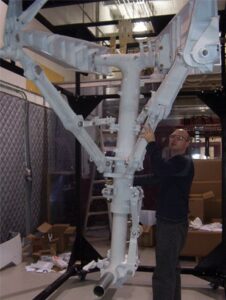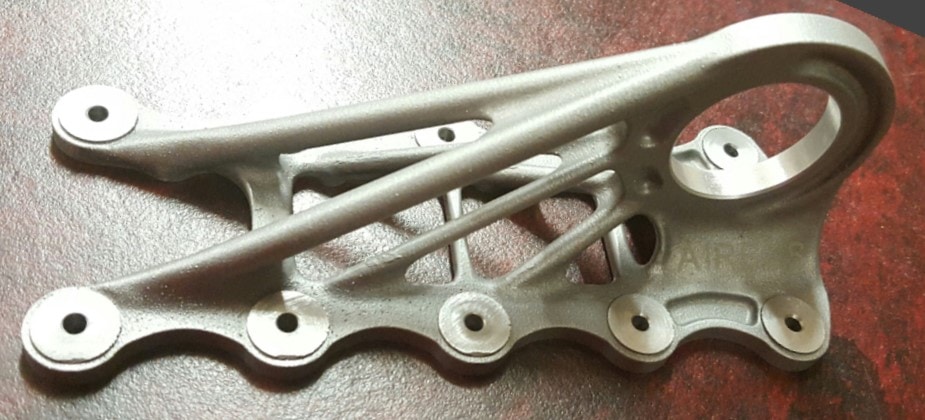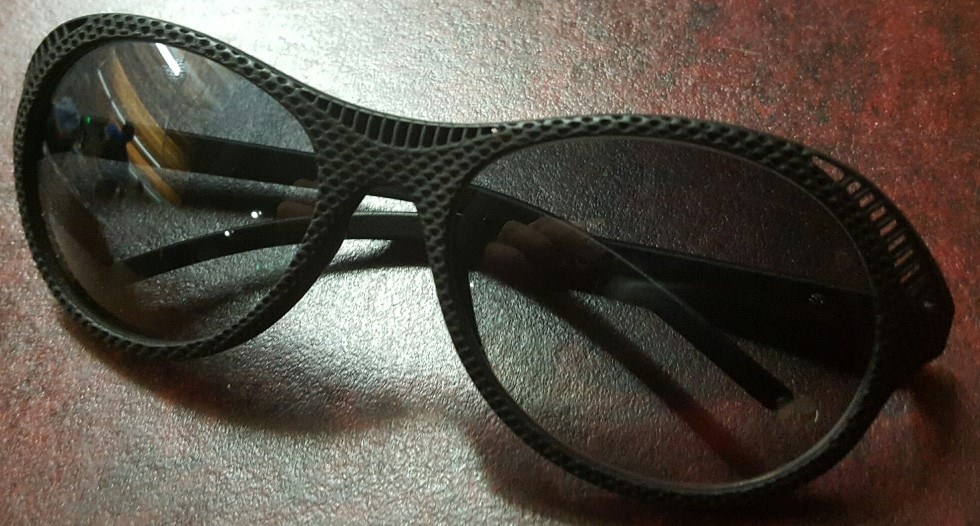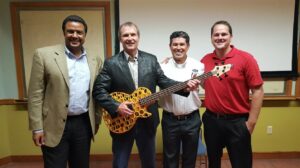
PADT was fortunate enough to sponsor, with the local SME group, an event in Fort Collins, Colorado where Terry came and shared his views on the industry. What follows is a summary of what we learned. They are basically notes and observations. Please contact us for any clarification or details:
Terry Wohlers started his talk by asking: How many people have heard of 3D printing?
He noted that these days it was pretty much everyone and if you haven’t then you must be living in a cave. It is like everyone can’t get enough of it.
There has been a lot of growth. In the last 5 years the industry has quadrupled. Last year it was a 4.1 billion industry and this year 5.5 billion. Terry doesn’t own any stock in any of the different 3D printing companies. He cautioned everyone to not confuse the share prices with the growth and the expansion within this industry.
After this introduction, Terry stated that there were really two things in the industry that really excited him. 3D Printing for Manufacturing and for Production Parts.
3D Printing in Manufacturing.
The first area to watch is the use of this technology for manufacturing applications. The team looking at the sales data drew a line in the sand for the low cost hobbyist printers at $5,000. There were 140,000 of them sold last year compared to under 13,000 above $5k. However, they don’t cost much so the money is still in the industrial machines. Here are the revenues for 2014:
Industrial: 1.12 Billion, or 86.6%.
Hobbyist: 173.3 Million, or 13.4%
There are FDM clones everywhere. 300 or more brands. There is a lot of open source software out there to develop your own FDM printer.
One thing to watch in the industry is expiring patents. This opens up competition and lowers prices and sometimes brings better machines to market. Right now, the SLS patent expired in June of last year so we are seeing new Selective Laser Sintering devices coming to market.
An exciting example of using 3D printing in manufacturing is the landing gear created by Stratasys. It was built and assembled with a Stratasys FDM printer and used for a fit check. Very Cool!
www.makepartsfast.com/2008/06/523/how-to-make-accurate-cad-to-stl-file-transitions
In medical, some great examples of tooling are jigs, fixtures, drill guides, and custom cutting guides for knee replacement. You can take scanned data and create a custom cutting guide for replacing your knee. Tens of thousands of those have been done.
Lots of work is being done on test fixtures as well.
In tooling, with additive manufacturing, you can do things that are highly complex. Instead of just straight gun drilled cooling channels you can make the cooling channels conform to the purpose of the part. You can reduce 30-300% cycle time by improving the cooling channels for injection molding dies. It turns out that Lego is printing their molds! They are using conformal cooling to increase their cycle times.
On the aerospace side of things, end use parts are literally taking off. Airbus is flying today 45,000 to 60,000 Ultem plastic parts. Both passenger and non-passenger planes have Ultem parts on them.
3D Printing for Final Production Parts
The second area to watch is the next frontier, and that is what excites him. You can do structural ribs in 3D printed parts. You need to make sure there are places in your parts to remove the support material used if you are going to use structural ribs. Design is absolutely critical. When he was at Solidworks world in Orlando a few years ago, there was a 3D printed bird that was flapping its wings.
This is a part of that bird that was being flown.
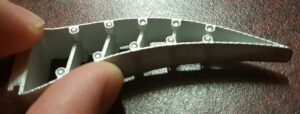
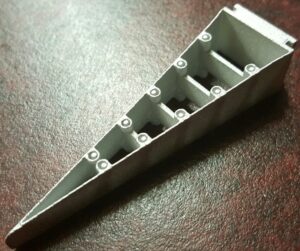
Two weeks ago Terry did a four day course at NASA on Design for Additive Manufacturing. The importance of the subject now is that companies and organizations are paying a lot of money to host people to teach them how to design for additive manufacturing. It was a great learning experience and NASA has already signed up for a second course that is focused on metals. NASA 3D printed a turbopump with 45%fewer parts that runs at 90,000 rpm, and creates 2,000 hp. This turbopump manufactured with conventional methods costs $220,000 for one, they can 3D print 2 of them in Inconel for $20,000.
A big part of Design for Additive Manufacturing is using the correct thinking but also using the right tools. There is a lack of both. We are taught to design for the conventional method of manufacturing. Now we have to undo some of that and think, hey there can be a better way to design this part.
One of those ways is Topology Optimization (let mathematics decide where to place the support structure so there is an increased strength to weight ratio). Another is the use of lattice structure (mesh and cellular). Ever since the beginning of time, man would make parts out of a solid material. Well, now you can have a thin skin and a lattice structure on the interior to produce something superior in some cases.
We need these kinds of tools integrated into the different CAD software’s so that we can design better parts. This bracket is flying on an Airbus. This cabinet bracket is made out of titanium and is flying on the A35 Airbus. It was designed for 2.3 tons and actually holds up to 12.5-14 tons depending on the test. Peter Zander at Airbus believes that in 2 years they will be printing 30 tons of metal per month!
GE Aviation is building fuel nozzles for the new leap engine. The new design is 25% lighter and five times more durable than the previous design that took 20 different parts to assemble to make one fuel nozzle. They will be printing 40,000 fuel nozzles per year.
Consumer Products:
It is going to be very big. Terry thinks this is going to be a sweet spot in the industry. Once example is this guitar called the Hive Bass. It is built out of Nylon and would cost you $3,500. You can have a custom guitar made for that price.
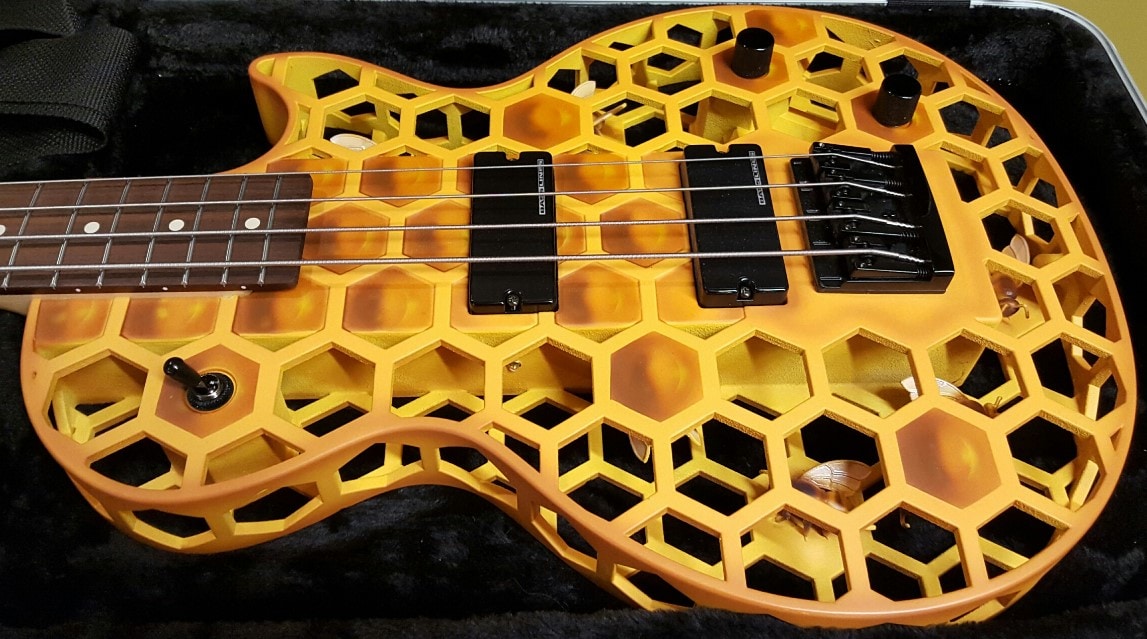
There is a Belgium company that creates custom frames for eyewear.
There is also a lot of Jewelry available for consumers along with many other products.
For metal part production there are many steps needed to finish the part. About 9 steps that Terry counted so it can be a long process.
Myth: Additive Manufacturing is fast! Well, that depends on Polymers versus Metals and the size and complexity of the parts. Airbus had one build that took 14 days to print with their metal printer! GE mentioned that they have to print the same part twice before they get it right because they will have to reorient the part or change the build parameters to get the best quality build possible.
According to some estimates, the global manufacturing economy is in the range of $13 trillion. If this technology were to penetrate 2% of it then that is over a quarter of a trillion dollars. 5% is approaching two-thirds of a trillion!
Terry finished by asking: How many of you think this will be North of the 5% estimate?
We want to thank Terry for giving such an informative talk, and New Belgium Brewing for hosting. The networking afterwords was fantastic.
If you would like to stay up to date on 3D Printing, we recommend the Wohlers Report. It is our primary reference document here at PADT.

